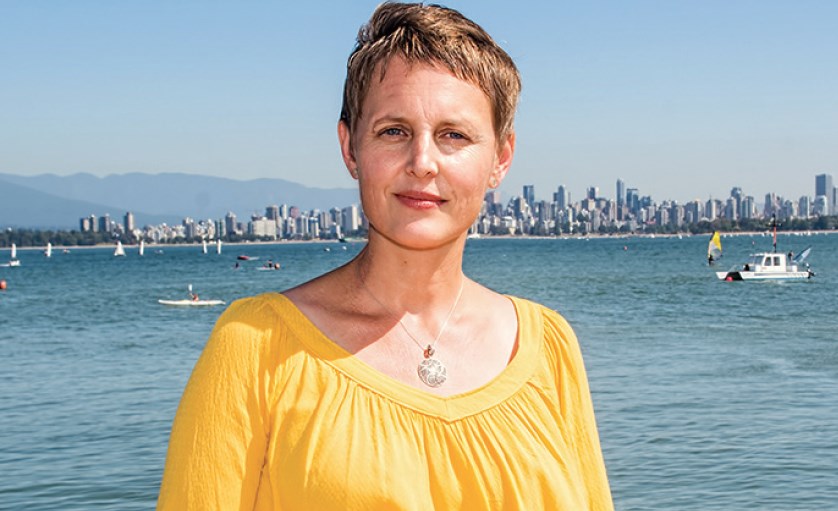Social media users pilloried People’s Party of Canada Leader Maxime Bernierafter third-party advertiser True North Strong & Free Advertising Corp.bought billboards, emblazoned with Bernier’s face and party affiliation, saying “Say NO to Mass Immigration.”
When they successfully lobbied Vancouver-based Pattison Outdoor Advertisingto remove the billboards, Bernier berated the critics as belonging to a “totalitarian leftist mob,” yet he basked in the publicity that the billboard generated.
While recent opinion polls put Bernier’s party in the 4% range, and he is excluded from upcoming debates because of that scarce support, the billboard furor and the passion it sparked is a sign that immigration matters are likely to be front and centre during the upcoming federal election campaign.
The result of that election could influence how the Canadian government deals with contentious issues such as:
•how to deal with migrants who cross into Canada outside of official border crossings;
•how many United Nations--processed refugees Canada should resettle;
•how many immigrants Canada should accept; and
•how Canada can best attract highly skilled workers needed to fill vacant jobs.
Migrants at the border
Compared with the situation along the southern U.S. border, only a small number of people try to cross north into Canada outside of official border crossings.
U.S. Customs and Border Protection hailed progress in July, when it counted 82,049 people who crossed the border outside official border crossings. It was the first time in five months that the count was below 100,000 people.
In contrast, during the first six months of 2019, only 6,858 people crossed the Canadian border outside official border crossings to make refugee claims.
Some migrants enter Canada outside of official border crossings because they are then eligible to apply for asylum. The Safe Third Country Agreement (STCA) stipulates that migrants who apply at official border crossings in Canada can be returned to the U.S. because the U.S. is considered a safe country for them to apply for asylum.
“The Conservatives and the Liberals are not that far apart on the issue of migrants at the border,” said University of British Columbia political science associate professor Antje Ellermann, whose research focus is migration.
The main difference, she said, is that the Conservatives might prioritize the issue more than the Liberals and use different words in their rhetoric.
Conservative Party of Canada Leader Andrew Scheer has said that his party will “put an end to illegal border crossings at un-official points of entry like Roxham Road [in Quebec],” but he has not explained how.
Vancouver Quadra MP Joyce Murray, who spoke to Business in Vancouver on behalf of the Liberal Party of Canada, said the proper way to refer to the migrants who enter Canada at unofficial border crossings is as “irregular” crossers, not “illegal” ones.
That’s because United Nations treaties say migrants have a right to cross borders at irregular places if their intent is to seek asylum, said Murray, who is in cabinet as the president of the Treasury Board.
The New Democratic Party(NDP) is the only party to advocate suspending the STCA.
UN-resettled refugees
A separate issue is resettling refugees from international refugee camps who have been processed by the UN.
Last year, Canada resettled 28,100 of the 92,400 refugees that the UN processed. That’s more than any other country in the world – an honour that Canada assumed after the U.S. drastically reduced the number of UN-settled refugees that it agreed to resettle, Ellermann said.
NDP immigration critic Jenny Kwansaid members from all parties on Parliament’s immigration committee have agreed that the government should lift its quota on privately sponsored refugees.
Skilled immigrants
The Liberals aim for a limit of 350,000 immigrants annually by 2021, up from about 300,000 in 2018. The NDP is calling for Canada to accept more than 370,000 immigrants annually, which is about 1% of the country’s population.
The Conservatives have not specified a limit for how many immigrants Canada should accept, but Scheer has said he wants to “set immigration levels consistent with what is in Canada’s best interests.”
How to attract skilled immigrants is a conundrum that has tested successive governments.
The Tories’ point system gave extra credit to those who had job offers, while the Liberals have given more points for academic credentials and what Ellermann called “human capital.”
Kwan wants to study the Express Entry system with an eye toward improving it, and to put more resources into it because, she said, the backlog of applicants is too large.•



